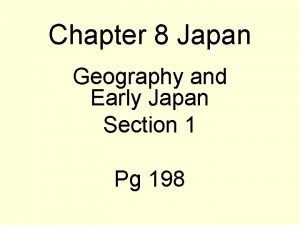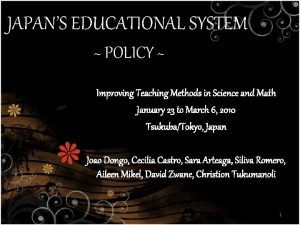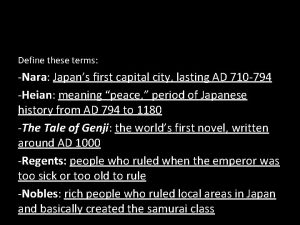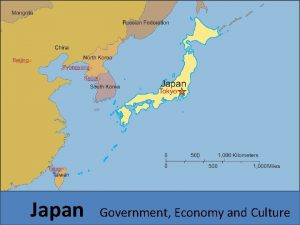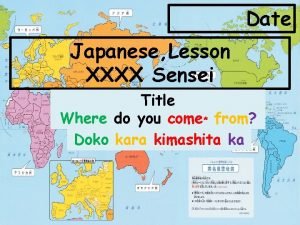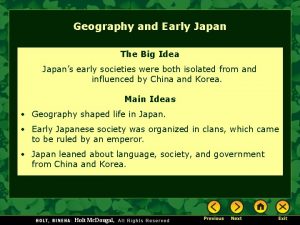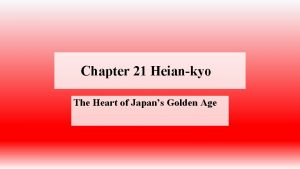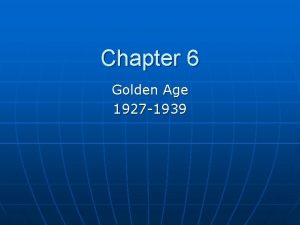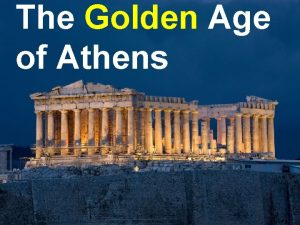Heiankyo The Heart of Japans Golden Age A









- Slides: 9

Heian-kyo: The Heart of Japan’s Golden Age

A New Capital • The emperor moved the capital from Nara to Heiankyo (Kyoto) because he thought Buddhist priests had become too powerful and he wanted a larger, grander capital.

The Rise of the Fujiwara Family • Though the emperors claimed to be descended from the Sun Goddess, the Fujiwara clan controlled Japan for nearly 300 relatively peaceful years. • The Fujiwara gained control by marrying into imperial family and ruling as regents.

Social Position In the Heian Court • Rank was determined by the family one came from. • The nobles received their wealth from taxes on the peasants. • The rankings affected wealth, what a person could wear, how high a gate could be, and the harshness of punishments

Beauty and Fashion During the Heian Period • Courtiers prized beauty, elegance, and fashion. • The ability to recognize beauty was valued over qualities like generosity and honesty. • Men had small beards. • Women had long hair, blackened their teeth, wore perfume, whitened their faces, put red on cheeks and lips, plucked eyebrows and painted them higher on forehead and wore many silk robes.

Entertainment in the Heian Court • Aristocrats had many games that tested athletic, poetic, or artistic skills. • Dancing was popular and bugaku combined dancing, music and drama.

Sculpture and Painting During the Heian Period • Japanese carvers would carve individual parts of a sculpture and join the pieces together to create a single work of art. • “Japanese painting, ” yamato -e were often secular and had 4 main types: landscapes showing the 4 seasons, places of natural beauty, people doing seasonal tasks, and scenes from literature

Writing and Literature During the Heian Period • Kana or “borrowed letters” was further divided between the more formal “katakana” and the simpler “hiragana. ” • Men used katakana; women used hiragana. • Women become the great writers of the age. • Lady Murasaki Shikibu wrote The Tale of Genji, often called the world’s first novel. She also wrote a diary. • Sei Shonagon wrote Pillow Book. • An unknown noblewoman wrote a diary: The Gossamer Years.

• 1. 2. 3. The End of the Heian Period The Heian period ended for three reasons: The wealthy owners of large estates paid no taxes. Law enforcement broke down and bandits roamed the land. Struggles over land power led to civil war and the rise of new military leaders.



